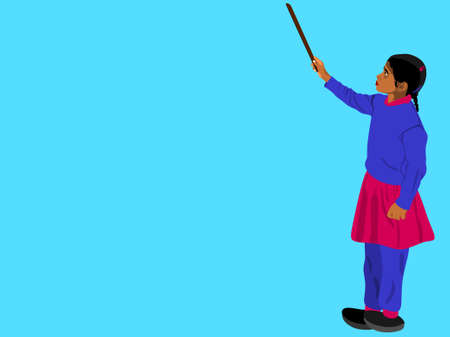1. Introduction to Global Fishing Villages
Fishing villages are small coastal communities where life revolves around the sea. Found on nearly every continent, these villages have developed unique cultures, traditions, and cuisines shaped by their relationship with the ocean. From the rugged shores of Maine to the tropical coasts of Southeast Asia, fishing villages offer a glimpse into how people live in harmony with nature while relying on it for survival.
These communities are more than just picturesque seaside towns — they play a crucial role in local and global economies. Fishing provides jobs, supports families, and feeds millions. Generations of fishers pass down knowledge and techniques that not only help them catch fish but also preserve their cultural identity.
The connection between fishing villages and the ocean is deeply rooted in tradition. Rituals, festivals, and culinary practices often center around the sea’s bounty. Whether it’s smoked herring in Scandinavia or grilled sardines in Portugal, each village brings its own flavor to the table.
Why Fishing Villages Matter
Fishing villages contribute significantly to food security, cultural diversity, and sustainable practices. They may be small in size, but their impact reaches far beyond their shorelines.
| Region | Example Village | Main Catch | Cultural Highlight |
|---|---|---|---|
| Northeast USA | Gloucester, Massachusetts | Lobster, Cod | Seafood festivals & maritime heritage |
| Japan | Wajima, Ishikawa Prefecture | Squid, Mackerel | Traditional morning fish markets |
| Africa (West Coast) | Elmina, Ghana | Tuna, Sardines | Canoe fishing & colorful boat art |
| Mediterranean | Marsaxlokk, Malta | Lampuki (Dolphin Fish) | Luzzu boats with painted eyes for protection |
The Ocean as Heritage and Livelihood
In many fishing villages, the ocean is seen not just as a source of income but as part of the community’s identity. Children grow up learning to read tides and mend nets from their elders. Boats are often blessed before heading out to sea. These customs reinforce a strong sense of belonging and respect for nature.
As we explore fishing villages around the world in this series, we’ll dive deeper into their unique stories — from daily routines and tools of the trade to flavorful dishes made fresh from the catch. These places remind us of the powerful bond between people and the sea — one that nourishes both body and spirit.
2. Traditional Fishing Techniques and Tools
All around the world, small fishing villages still rely on age-old techniques and handmade tools passed down through generations. These traditional methods not only reflect the unique culture of each region but also offer a sustainable way to harvest the oceans bounty. Take a look at some of the most iconic fishing practices still in use today.
Fishing Techniques from Around the Globe
From Asia to the Americas, fishing communities have developed innovative ways to catch fish using what nature provides. Many of these techniques are eco-friendly and highly adapted to local environments.
| Region | Technique | Description |
|---|---|---|
| Southeast Asia | Bamboo Fish Traps | Fishers weave bamboo into cone-shaped or cylindrical traps placed in rivers or shallow waters to guide fish inside. |
| South America | Hand-thrown Cast Nets | Used along riverbanks or shallow seas, these circular nets are thrown by hand and sink quickly to trap fish underneath. |
| Africa (West Coast) | Dugout Canoe Fishing with Hand Lines | Fishers paddle out in wooden canoes and drop simple lines baited with hooks, feeling for bites by hand. |
| Northern Europe | Weir Fishing | Wooden fences or stone barriers built along tidal areas channel fish into traps during high tide. |
| Pacific Islands | Spear Fishing While Free Diving | Divers use hand-carved spears or modern spearguns while swimming underwater to catch fish close to coral reefs. |
The Art of Making Traditional Tools
In many villages, fishing tools aren’t bought—they’re made by hand using local materials like wood, bamboo, natural fibers, and shells. Crafting gear is often a community effort and a skill taught from parent to child.
Bamboo Traps in Vietnam and Cambodia
Bamboo is cut, soaked, bent, and tied together without nails. Each trap is designed for specific species like catfish or shrimp and placed strategically based on water flow and fish habits.
Casting Nets in Brazil and the Gulf Coast USA
Nets are made from nylon or cotton twine with small weights sewn into the edges. Locals learn how to throw them in perfect circles, a technique that takes years to master but results in efficient catches of sardines or mullet.
The Importance of Tradition Today
These traditional methods are more than just practical—theyre part of each village’s identity. In an age of industrial fishing, these techniques remind us of a time when people lived closely with nature and respected its limits.
Whether it’s a fisherman casting his net at dawn in Nicaragua or weaving a trap along a riverbank in Laos, these practices continue to shape daily life in coastal communities across the globe.
![]()
3. Fresh Catch: Signature Seafood from Each Region
One of the most exciting parts of visiting fishing villages around the world is discovering the unique seafood that defines each region. These coastal communities have developed deep-rooted traditions around catching and preparing their local fish, shellfish, and other ocean delicacies. From the Pacific to the Mediterranean and deep into Americas South, each village has its own prized catch.
Japan: Sushi-Grade Tuna
In Japanese fishing villages like Oma or Misaki, tuna is king. These areas are famous for their high-quality bluefin tuna, which often ends up in Tokyos top sushi restaurants. Fishermen here use traditional hand-line techniques or longlines to catch these massive fish, sometimes weighing over 600 pounds. The catch is auctioned off at record-breaking prices, showing just how prized this seafood is both locally and globally.
Mediterranean: Octopus & Squid
Coastal villages in Greece, Italy, and Spain have long relied on octopus and squid as staple seafood. Local fishermen use pots, traps, or even their hands to catch these intelligent sea creatures. In places like Santorini or Sicily, its common to see octopus hanging out to dry in the sun before being grilled and served with olive oil and lemon—a true Mediterranean treat.
Cajun Country (Louisiana, USA): Crawfish
No visit to a Louisiana bayou village would be complete without a crawfish boil. These freshwater crustaceans are caught using baited traps in swampy areas and are a cornerstone of Cajun cuisine. During springtime “crawfish season,” entire communities come together for backyard boils featuring corn, potatoes, and plenty of spice.
Northern Europe: Cod & Herring
Fishing villages in Norway, Iceland, and the UK have built centuries-old economies around cod and herring. These cold-water fish are typically preserved by drying or pickling, a tradition that continues today. Think of dishes like Icelandic plokkfiskur (a creamy fish stew) or pickled herring served with rye bread in Scandinavia.
Regional Seafood Highlights
| Region | Signature Catch | Common Preparation |
|---|---|---|
| Japan (Oma) | Bluefin Tuna | Sashimi, Sushi |
| Mediterranean (Greece/Italy) | Octopus & Squid | Grilled with Olive Oil & Lemon |
| Cajun Country (Louisiana) | Crawfish | Crawfish Boil with Spices |
| Northern Europe (Norway/Iceland) | Cod & Herring | Dried Fish, Pickled Herring |
| Southeast Asia (Thailand/Vietnam) | Prawns & Crabs | Curry Dishes, Grilled Street Food Style |
The variety of seafood found in global fishing villages reflects not just geography but also generations of culinary tradition. Whether youre enjoying fresh sashimi in Japan or peeling spicy crawfish in Louisiana, each bite tells a story of community and culture tied to the sea.
4. Coastal Cuisine and Cultural Flavors
Fishing villages around the world arent just known for their fresh catch—theyre also famous for how they turn that catch into delicious, memorable meals. Each coastal community has its own unique way of cooking fish and seafood, shaped by history, local ingredients, and traditional techniques passed down through generations.
From Ocean to Table: A Global Taste Tour
Let’s take a look at how different fishing cultures prepare their signature seafood dishes. Whether it’s grilled, stewed, dried, or raw, these meals reflect the heart of each villages identity and lifestyle.
Traditional Dishes from Fishing Villages
| Region | Popular Dish | Main Ingredients | Cooking Method |
|---|---|---|---|
| New England, USA | Clam Chowder | Clams, potatoes, onions, cream | Simmered in a creamy broth |
| Hokkaido, Japan | Kaisen-don (Seafood Rice Bowl) | Raw fish, rice, wasabi, soy sauce | Served raw over steamed rice |
| Sicily, Italy | Pasta con le Sarde | Sardines, fennel, pine nuts, pasta | Sautéed and mixed with pasta |
| Cape Town, South Africa | Pickled Fish (Kaapse Kerrievis) | Fish fillets, vinegar, curry spices | Marinated and served cold |
| Baja California, Mexico | Fish Tacos | Grilled or fried fish, tortillas, slaw | Grilled or fried and wrapped in tortillas |
The Role of Local Ingredients and Seasonality
The flavors of coastal cuisine are deeply tied to what’s available locally. In colder regions like Scandinavia, smoked and cured fish help preserve the catch during long winters. In tropical areas like Southeast Asia, bold spices and coconut milk are often used to enhance freshness and flavor.
Cultural Cooking Techniques Passed Down Generations
In many fishing communities, recipes are family treasures. Open-fire grilling on the beach in the Caribbean or fermenting fish sauces in Vietnam shows how culinary traditions evolve alongside fishing practices. These methods not only preserve food but also create distinct regional tastes that tourists and locals alike crave.
A Celebration of Sea and Soul
No matter where you go—from remote Alaskan villages to sun-drenched Mediterranean harbors—the connection between the sea and the kitchen is strong. Meals bring people together after a long day on the water. They’re more than food—they’re celebrations of culture, survival, and community spirit.
This rich diversity in coastal cuisine reminds us that fishing isnt just about catching—it’s also about sharing stories through every bite.
5. Sustainable Fishing and Community Resilience
As fishing villages around the world face growing challenges like climate change, overfishing, and pollution, many communities are taking steps to protect their way of life. These villages are blending traditional knowledge with modern sustainability practices to ensure they can continue fishing for generations to come.
Adapting to Climate Change
Rising sea levels, warmer waters, and shifting fish populations are major concerns for coastal communities. Fishermen in Alaska, for example, have noticed changes in salmon migration patterns. In response, many villages are adjusting their fishing seasons and techniques to align with these environmental changes.
Examples of Climate Adaptation
| Region | Climate Challenge | Community Response |
|---|---|---|
| Southeast Asia | Coral bleaching affecting fish habitats | Implementing marine protected areas |
| Alaska | Changing salmon migration patterns | Adjusting fishing seasons and quotas |
| Caribbean | Stronger hurricanes damaging coastlines | Building storm-resistant infrastructure |
Tackling Overfishing Through Sustainable Practices
Overfishing threatens both the environment and the economy of fishing villages. To combat this, many communities are turning to sustainable methods such as:
- Catch limits: Setting quotas to prevent depleting fish stocks.
- Gear restrictions: Using nets that allow smaller or non-target fish to escape.
- No-fishing zones: Creating areas where fish populations can recover.
Preserving Traditions While Moving Forward
A big part of building resilience is making sure cultural traditions arent lost. From Japan’s centuries-old tuna auctions to Norway’s seasonal cod festivals, communities are finding ways to celebrate their heritage while adapting to modern needs. Many villages are also involving young people in local fisheries through education programs and apprenticeships.
Youth Engagement Programs by Region
| Country | Program Name | Description |
|---|---|---|
| Iceland | Future Fishers Initiative | Youth training in sustainable fishing techniques |
| United States (Maine) | Lobster Apprenticeship Program | Hands-on experience for teens in lobster fisheries |
| Philippines | Bangka School Project | Teaching boat-building and marine conservation together |
Sustainable fishing isn’t just about protecting fish—it’s about keeping cultures alive, supporting local economies, and preparing future generations to carry on the legacy of life by the sea.


